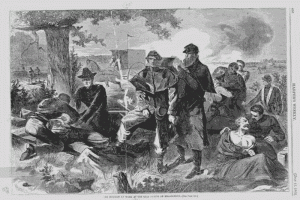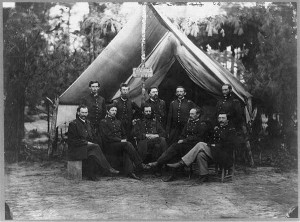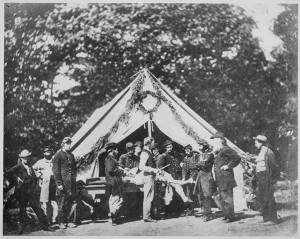Of Flagg, American flag and yellow flag

A few years after the Civil War ended, a multi-volume opus was written. Titled “The Medical and Surgical History of the War of the Rebellion, 1861-’65,” it bulged with case studies, surgical breakthroughs – and some flags, one of which was a person.
FLAGG
One of the breakthroughs involved Corporal Eugene Flagg, a member of the 94th Illinois Volunteers. In December 1862, he was severely wounded during a battle in Arkansas when a musket ball slammed into his head. As one of the doctors put it, the metal ball “fractured and depressed the cranium two inches posterior to the coronal, and one and one-fourth inches to the left of the sagittal suture.”

Put more bluntly, it almost killed the young, blue-eyed farmer. An assistant surgeon with the unit “removed all fragments of bone….The patient was immediately admitted to the field hospital.” Within weeks, with Flagg’s condition “favorable and daily improving,” he was discharged.
Seven years later, the damage remained, with Flagg still suffering from head pain and paralysis of his leg. He died in California in 1872, having gained ten years of life from the doctors’ skills.
AMERICAN FLAG

The physicians also reported on other kinds of damage, “including every influence that tended to lower the vital powers of the soldier, such as over-fatigue, loss of sleep, exposure to cold and wet,…over-crowding in quarters and the diseases to which these influences predisposed.”
Those overseeing the troops recommended such solutions as fresh vegetables and more carbohydrates “that formed the bulk of the nutritive supply.”
In addition, the physicians weighed troubles that were emotional in nature and called “depression of spirits.” The authors noted several causes, including personal woes, anxiety, and “the gloom and despondency attending disaster to the flag.”
Those symptoms were seen as particularly occurring among POWs, with the physicians diagnosing that the loss or absence of the American flag and other banners under which they served could lead to deep depression.

TRAIN FLAG
Doctors who flitted around battlefields, transporting the wounded and crossing dangerous territory, flew a special flag that identified their work. It wasn’t a white flag of truce; it was a yellow flag of medicine.
Hospital trains were distinguished by displaying those flags with an “H” on them and by the inscription “U.S. Hospital Train” in large letters along the paneling of the railcars.
As a result, the book disclosed, the trains “were seldom molested” by enemy forces.
